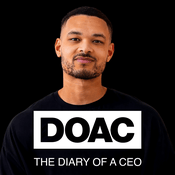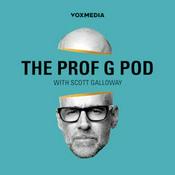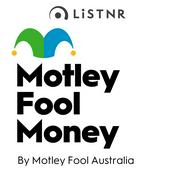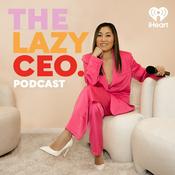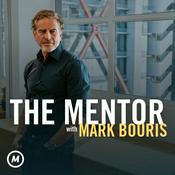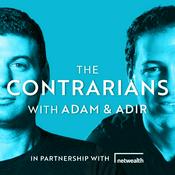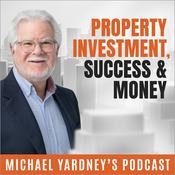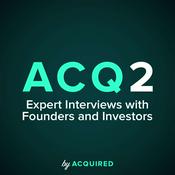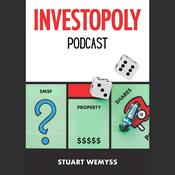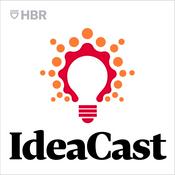2293 episodes

Kodiak Copper (TSXV:KDK) - Maiden Resource Shows Huge Copper & Gold Potential
18/12/2025 | 21 mins.
Interview with Christopher Taylor, Chairman, and Claudia Tornquist, President & CEO of Kodiak Copper Corp.Our previous interview: https://www.cruxinvestor.com/posts/kodiak-copper-tsxvkdk-q4-2025-resource-estimate-will-mark-critical-inflection-point-7948Recording date: 10th December 2025Kodiak Copper has announced its maiden resource estimate for the MPD project in British Columbia, marking a significant milestone after six years of exploration. The resource comprises 440 million tons at 0.39% copper equivalent (indicated) and 0.32% (inferred), containing 2.4 billion pounds of copper and 1.7 million ounces of gold across seven discrete deposits.The company achieved remarkable exploration efficiency, discovering nearly 2 million ounces of gold with only 90,000 meters of drilling—a superior discovery rate compared to peer projects. Chairman Chris Taylor noted this efficiency exceeded even his previous work at Great Bear Resources, which sold for C$1.8 billion.Metallurgical results are encouraging, showing 80% copper recovery and 60% gold recovery with no deleterious elements. The company is conducting optimization work to potentially improve gold recovery rates, which could significantly enhance project economics given current gold prices substantially above the $4,000 per ounce assumption used in resource calculations.All seven deposits remain open for expansion, with drilling already indicating significant growth opportunities. The company has identified approximately 20 additional exploration targets across the property, including areas with surface samples showing 4-5% copper grades—higher than any current resource deposit yet never drill-tested.Management is prioritizing resource expansion over immediate economic studies, believing this approach maximizes shareholder value by demonstrating the district's full scale potential. President Claudia Tornquist emphasized that "size is what will make this project attractive." The company maintains $7-8 million cash to fund a 2026-2027 drilling program, with a resource update expected in approximately one year.The project benefits from favorable market dynamics, with copper and gold at or near all-time highs and limited pipeline of development projects to address structural supply deficits. Located in British Columbia's established mining jurisdiction, MPD is positioned as a potential future copper-gold producer in a supply-constrained market.View Kodiak Copper's company profile: https://www.cruxinvestor.com/companies/kodiak-copper-corpSign up for Crux Investor: https://cruxinvestor.com

Sendero Resources (TSXV:SEND) - Restructured Gold Explorer Targets Major Discovery in Q1 2026
16/12/2025 | 31 mins.
Interview with Jeremy Gillis, Director Capital Markets of Sendero ResourcesOur previous interview: https://www.cruxinvestor.com/posts/sendero-resources-tsxvsend-drilling-high-grade-targets-in-argentinas-vicua-copper-district-5346Recording date: 10th December 2025Sendero Resources has emerged as a compelling exploration story following a comprehensive restructuring that brought together mining industry veterans to advance a district-scale land position in Argentina's proven Vicuña copper-gold belt. Trading at approximately $30 million market capitalization with just 24 million shares outstanding, the company controls 211 square kilometers along the same structural corridor as billion-dollar discoveries including Filo del Sol, Josemaría, and Los Helados.The transformation began in 2024 when new leadership overhauled the struggling junior explorer, recruiting CEO Alex Gostevskikh (ex-Kinross, Centerra) and Steven McMullan, a PDAC prize-winning geologist whose discovery work contributed to Kamoa—now the world's fourth-largest producing copper mine. This production-focused technical team brings a critical economic lens to evaluating mineralization from the earliest exploration stages.What distinguishes Sendero's approach is comprehensive data reprocessing. The team analyzed 40 years of historical exploration data from the property—including 16,000 meters of drilling that showed mineralization throughout with no blank holes—plus 300,000 meters of drilling data from neighboring Filo del Sol. This work identified specific pathfinder elements and structural controls consistent between major district discoveries and Sendero's ground, including anomalous silver signatures that mirror Filo del Sol's high-grade zones.The company has attracted blue-chip mining investors including Peter Marrone (Yamana Gold, Allied Gold) and Argentine billionaire Eduardo Elsztain, who participated in progressively higher-valuation financings. The most recent $4 million raise closed at $0.95 per share with no warrants—a significant premium to earlier rounds. With management and strategic investors controlling 60-70% of shares, minimal public float exists.Sendero plans a focused 3,600-meter drill program for Q1 2026, targeting a newly identified area along a fault corridor that management believes hosts discovery-scale mineralization. Rather than testing multiple historical targets, the six-hole program concentrates on what the team considers the highest-probability opportunity for a significant find in this world-class gold-copper district.View Sendero Resources' company profile: https://www.cruxinvestor.com/companies/sendero-resourcesSign up for Crux Investor: https://cruxinvestor.com

From Gold Profits to Oil Equities: The Next Contrarian Setup? | Compass
12/12/2025 | 36 mins.
Recording date: 10th December 2025Olive Resource Capital's November 2025 portfolio performance—reaching year-to-date highs despite October's commodity market volatility—demonstrates the strategic value of disciplined gold position management within diversified resource portfolios. Whilst the firm identifies compelling contrarian opportunities in oil equities trading at generational lows, their analysis paradoxically reinforces gold's foundational importance through quantitative validation and macro context.The most striking evidence emerges from commodity ratio analysis. The oil-to-gold ratio currently sits at 20% of its 25-year historical average, representing an extraordinary dislocation that simultaneously confirms oil's severe undervaluation and validates gold's exceptional relative strength. This 500% premium to historical norms reflects fundamental repricing within commodity markets, with gold demonstrating superior pricing power amidst coordinated global liquidity expansion.Executive Chairman Derek McPherson and President & CEO Samuel Pelaez articulated the macro framework supporting hard asset valuations: persistent deficit spending across the United States, China, Canada, and European nations creates monetary conditions under which gold has historically thrived. "There is tons of liquidity coming and so your hard assets which oil is one of are going to be economic at least economic stability if not economic growth," McPherson explained, referencing macroeconomist Lyn Alden's observation that debt-financed economic support creates inexorable momentum favouring tangible assets over financial claims.China's commodity accumulation behaviour provides instructive parallels. The nation's documented gold reserve building during 2022-2024 contributed significantly to gold's rally from $1,800 to over $4,000 per ounce. Now applying similar logic to crude oil—stockpiling 700,000 barrels daily beyond refining needs—China demonstrates sovereign recognition of strategic hard asset acquisition during relative weakness. This pattern validates gold's completed appreciation cycle whilst identifying emerging opportunities in complementary commodities.Olive Resource Capital's tactical approach exemplifies professional position management. The team trimmed gold exposure during September 2025's strength, capturing profits whilst maintaining strategic core holdings, then added positions during October-November weakness at improved valuations. "We've actually been adding positions and effectively reducing our cash balance," McPherson confirmed, describing deployment across selective gold equities alongside exploratory oil positions.This disciplined rebalancing contrasts sharply with wholesale rotation between commodity sectors. Gold maintains permanent strategic importance through unique characteristics: portfolio insurance properties, liquidity during market stress, and systematic sensitivity to monetary conditions. Whilst cyclical opportunities in energy or base metals may offer superior near-term returns, gold provides stability and appreciation independent of specific economic outcomes.The investment framework applies across commodity cycles. Pelaez referenced Agnico Eagle's 20-30x return from 2015-2025, demonstrating rewards from acquiring premier assets during sector pessimism. "You can buy top of class best management best run companies and you still stand an opportunity to make multiples on your money," he observed regarding current oil valuations—a principle equally applicable to quality gold producers offering continued leverage to further monetary metal appreciation.For sophisticated investors, gold's role transcends cyclical trading. The monetary environment—coordinated deficit spending, currency debasement, sovereign reserve diversification—creates conditions for sustained appreciation whilst maintaining portfolio foundation that enables tactical exploration of complementary opportunities. The lesson from Olive Resource Capital proves clear: gold serves as strategic anchor whilst other commodity sectors rotate through relative value cycles.Learn more: https://cruxinvestor.comSign up for Crux Investor: https://cruxinvestor.com

Domestic Metals (TSXV:DMCU) - $4M Raise Funds Geophysics and Porphyry Drilling in 2026
12/12/2025 | 26 mins.
Interview with Gordon Neal, President, Domestic Metals Recording date: 9th December 2025Domestic Metals has acquired a promising Montana copper porphyry project from Rio Tinto through an earn-in agreement that highlights the property's significant potential. The company can earn 60% ownership by spending $3.15 million USD on exploration work, with Rio Tinto retaining 40% plus an unusual 20% clawback provision—a protective measure that underscores the major miner's conviction in the project's long-term value.The Smart Creek-Sunrise property occupies compelling geological ground, located 50 kilometers northwest of the historic Butte mine, which has produced 22 billion pounds of copper over a century. The project sits within the same Helena formation geology, with company geologists noting that rocks match Butte's characteristics in age and composition. Rio Tinto drilled 26 of 40 total holes on the property, with results improving progressively from southeast to northwest. The best intercept to date shows 109 meters at 0.75% copper, including 80 meters at 0.97% copper, suggesting drilling was advancing toward rather than away from the porphyry center.President Gordon Neal brings proven credentials, having built MAG Silver from $50 million to $2.5 billion market capitalization and New Pacific Metals from $100 million to $1.5 billion. His track record in capital markets and project development provides credibility to the company's exploration strategy.The company recently raised $4 million to fund comprehensive IP and magnetotelluric geophysical surveys in January-February 2026, followed by 3,000+ meters of drilling starting February-March. Assay results are expected April-May 2026. A critical advantage is Montana's streamlined permitting environment, with drill permits obtained in four months versus 5-7 years in Arizona. The Forest Service recently extended 36 expired drill permits using existing paperwork—unprecedented flexibility that enables rapid, capital-efficient advancement of what could become a significant domestic copper discovery.Sign up for Crux Investor: https://cruxinvestor.com

Avino Silver & Gold (TSX:ASM) - Record Revenue Powers Three-Mine Expansion Strategy
12/12/2025 | 16 mins.
Interview with David Wolfin, President and CEO, Avino Silver & GoldOur previous interview: https://www.cruxinvestor.com/posts/avino-silver-gold-tsxasm-junior-to-intermediate-producer-transformation-underway-8062Recording date: 9th December 2025Avino Silver & Gold Mines Limited is executing an ambitious expansion plan to transform from a single-asset producer into a diversified mid-tier mining company. The Mexico-based operation, which traces its roots to 1968, currently generates between 2.5 and 2.8 million ounces of silver equivalent annually and aims to triple its producing asset base within five years through organic development of properties it already owns.The company's third quarter 2025 results underscore the financial strength supporting this growth trajectory. Avino achieved record revenues of $21 million USD with $9.9 million in gross profit and approximately $5 million in free cash flow. All-in sustaining costs remain in the low $20s per ounce, creating substantial margins as silver approaches $60 per ounce. Revenue composition is diversified across 49% silver, 19% gold, and 31% copper, providing natural commodity price hedging.La Preciosa represents the most immediate production catalyst. Located 19 kilometers from the existing Avino mill, the project commenced ore extraction one month ahead of schedule, shipping over 6,700 tons during the recent quarter. Early drilling results have significantly exceeded previous feasibility estimates, with intercepts reaching 787 grams per ton of silver compared to the 200 g/t resource grade established by prior operator Coeur Mining. President and CEO David Wolfin noted these high-grade hits suggest actual mining grades will substantially exceed earlier projections.The company's third potential producing asset involves reprocessing historical oxide tailings adjacent to current operations. With 6.7 million tons in proven and probable reserves and capital requirements under $50 million, the project offers particularly attractive economics with projected all-in sustaining costs around $10 per ounce. At current metal prices, Wolfin estimates the project's net present value at approximately $250 million.Supporting this expansion, Avino has more than doubled its exploration budget for 2026, planning 20,000 to 30,000 meters of drilling across both properties. Institutional ownership has risen from under 10% to 32% over two years through organic open-market purchases, validating the growth thesis. Management expects to release updated resource and reserve estimates for both La Preciosa and Avino in the first quarter of 2026.Learn more: https://www.cruxinvestor.com/companies/avino-silver-gold-mines-ltdSign up for Crux Investor: https://cruxinvestor.com
More Business podcasts
Trending Business podcasts
About Company Interviews
Listen to Company Interviews, The Diary Of A CEO with Steven Bartlett and many other podcasts from around the world with the radio.net app

Get the free radio.net app
- Stations and podcasts to bookmark
- Stream via Wi-Fi or Bluetooth
- Supports Carplay & Android Auto
- Many other app features
Get the free radio.net app
- Stations and podcasts to bookmark
- Stream via Wi-Fi or Bluetooth
- Supports Carplay & Android Auto
- Many other app features


Company Interviews
download the app,
start listening.
